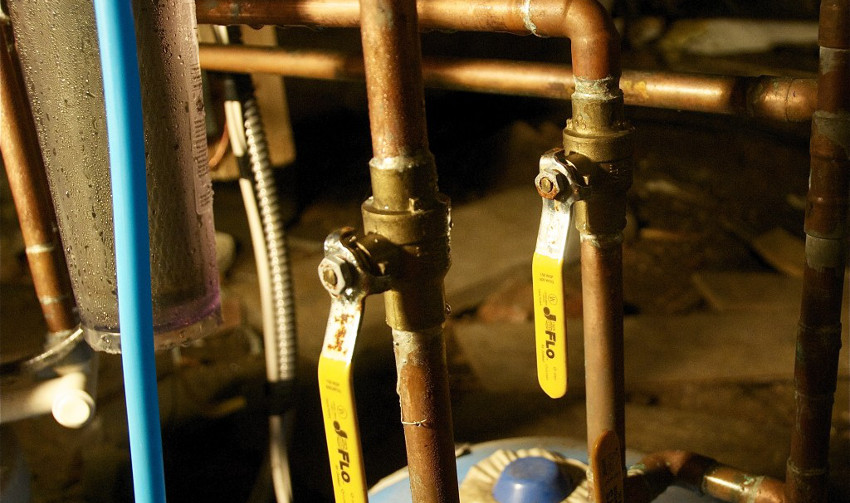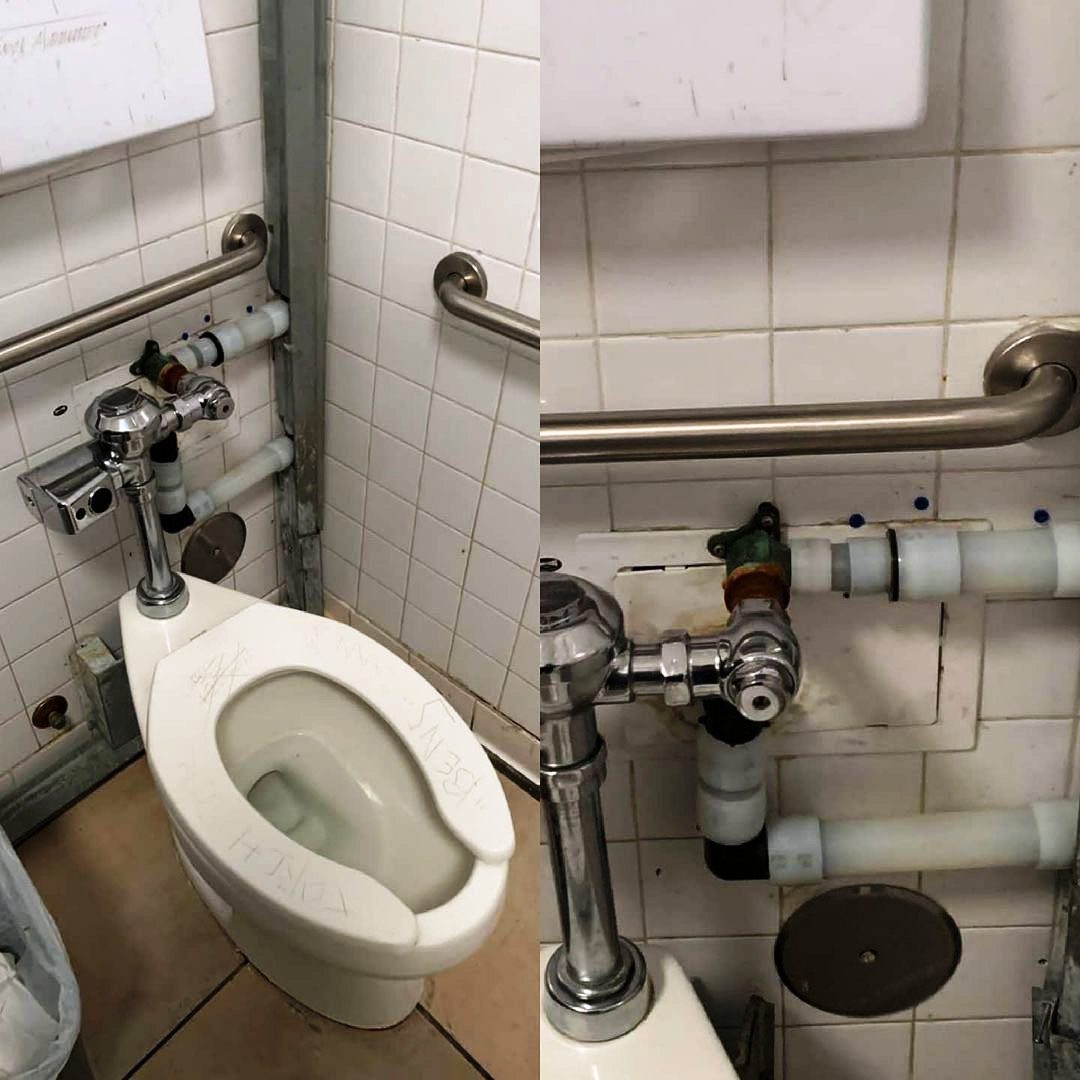When Appliances Go Awry: Common Issues That Require a Plumber's Expertise
When Appliances Go Awry: Common Issues That Require a Plumber's Expertise
Blog Article
Are you searching for help around Why Do My Plumbing Pipes Make A Knocking Noise?

To diagnose loud plumbing, it is important to determine very first whether the unwanted sounds take place on the system's inlet side-in various other words, when water is transformed on-or on the drain side. Noises on the inlet side have actually differed causes: excessive water stress, used valve and tap components, improperly connected pumps or various other home appliances, improperly placed pipeline fasteners, and plumbing runs having way too many tight bends or other constraints. Noises on the drain side generally come from poor area or, just like some inlet side noise, a format including tight bends.
Hissing
Hissing sound that happens when a faucet is opened somewhat typically signals too much water stress. Consult your local public utility if you think this problem; it will certainly be able to inform you the water pressure in your location as well as can install a pressurereducing shutoff on the incoming water pipe if needed.
Other Inlet Side Noises
Squeaking, squeaking, damaging, snapping, and also touching typically are brought on by the growth or tightening of pipes, generally copper ones providing hot water. The noises take place as the pipes slide against loosened fasteners or strike neighboring house framework. You can frequently identify the area of the issue if the pipelines are exposed; simply follow the noise when the pipes are making sounds. More than likely you will uncover a loose pipeline hanger or an area where pipelines lie so near to floor joists or other mounting pieces that they clatter versus them. Affixing foam pipe insulation around the pipelines at the point of contact ought to treat the problem. Make sure bands and wall mounts are secure as well as supply adequate support. Where feasible, pipeline fasteners must be affixed to huge architectural components such as foundation walls as opposed to to framing; doing so reduces the transmission of resonances from plumbing to surface areas that can amplify as well as move them. If affixing fasteners to framing is inevitable, cover pipes with insulation or other durable product where they speak to fasteners, as well as sandwich completions of brand-new bolts between rubber washers when installing them.
Remedying plumbing runs that deal with flow-restricting tight or various bends is a last option that must be taken on only after speaking with a competent plumbing service provider. However, this situation is fairly common in older homes that may not have actually been developed with interior plumbing or that have actually seen numerous remodels, especially by amateurs.
Chattering or Screeching
Intense chattering or screeching that occurs when a valve or faucet is switched on, and that typically vanishes when the fitting is opened completely, signals loose or faulty interior parts. The service is to replace the valve or faucet with a new one.
Pumps and appliances such as washing makers and also dish washers can move electric motor sound to pipes if they are incorrectly linked. Link such items to plumbing with plastic or rubber hoses-never rigid pipe-to isolate them.
Drain Sound
On the drainpipe side of plumbing, the chief goals are to remove surface areas that can be struck by dropping or hurrying water as well as to protect pipes to contain inescapable audios.
In brand-new building, tubs, shower stalls, commodes, as well as wallmounted sinks as well as basins should be set on or versus resistant underlayments to minimize the transmission of noise through them. Water-saving toilets and also taps are less noisy than conventional versions; mount them rather than older types even if codes in your location still allow utilizing older components.
Drainpipes that do not run vertically to the cellar or that branch right into horizontal pipe runs sustained at floor joists or other mounting existing particularly troublesome sound issues. Such pipes are huge sufficient to radiate substantial resonance; they also lug considerable amounts of water, that makes the circumstance worse. In brand-new building, specify cast-iron dirt pipes (the big pipes that drain pipes bathrooms) if you can manage them. Their enormity contains a lot of the noise made by water passing through them. Additionally, avoid transmitting drains in walls shown to bedrooms and also spaces where individuals gather. Wall surfaces including drains ought to be soundproofed as was described previously, using dual panels of sound-insulating fiberboard and also wallboard. Pipes themselves can be covered with unique fiberglass insulation made for the objective; such pipes have a resistant vinyl skin (occasionally having lead). Results are not constantly satisfying.
Thudding
Thudding sound, typically accompanied by shivering pipes, when a tap or appliance valve is switched off is a condition called water hammer. The noise as well as resonance are caused by the reverberating wave of stress in the water, which suddenly has no location to go. Often opening up a shutoff that releases water quickly into an area of piping containing a limitation, elbow, or tee fitting can generate the same condition.
Water hammer can generally be cured by setting up installations called air chambers or shock absorbers in the plumbing to which the problem valves or faucets are linked. These tools permit the shock wave created by the halted flow of water to dissipate in the air they consist of, which (unlike water) is compressible.
Older plumbing systems might have brief upright sections of capped pipe behind walls on faucet competes the very same objective; these can at some point fill with water, decreasing or ruining their efficiency. The remedy is to drain pipes the water supply entirely by shutting down the main water supply shutoff and also opening up all faucets. Then open the primary supply shutoff and also close the faucets one by one, starting with the tap nearest the shutoff and also finishing with the one farthest away.
Why Are My Pipes Making Noise?
Now that you know how your home’s plumbing works, what’s causing your pipes to make such a fuss? Common pipe noises include loud banding, gurgling sounds and whistling noises. You may also hear your pipes humming or squeaking.
Though the sound may seem serious, some noises are an indication of minor plumbing issues that need some simple tweaking to correct. However, even minor issues should be corrected as soon as possible to prevent more serious problems from developing. The four most common causes of pipes making noise when water is turned on, toilets are flushed, and water is drained include pressure issues, the air in pipes, clogs or obstructions, and loose components.
High Water Pressure
Humming or vibrating sounds are common symptoms of high water pressure. The pressure of your home’s incoming cold water supply is kept consistent through the use of a water pressure regulator. Also called a pressure-reducing valve (PRV), this device reduces the pressure of the incoming supply, which may be as high as 100 to 200 PSI (pounds per square inch), depending on where you live. Ideally, incoming pressure should be about 50 PSI to prevent pipes from making noise and experiencing unnecessary strain.
If your pressure seems inconsistent or higher than is comfortable, locate your main water valve and check to see if there is another device on the other side of this. If you notice that the water pressure coming from your hot water pipe seems to be too strong, adjust your water heater.
Water Hammer
The sound of banging can often be explained by a phenomenon known as a water hammer. If you have high pressure, this effect may be even more pronounced. When you turn a tap on full, water rushes through your pipes at high speed. Unless you turn your taps off slowly and gradually, which most people don't, the flow will be cut off abruptly as soon as you stop the water supply. Water then slams against the shut-off valve, causing a loud bang.
To prevent this from happening, you'll first want to install a PRV to reduce high pressure, as stated above. If you're still experiencing water hammer after this, you may want to install water hammer arrestors. This device is equipped with a spring-loaded shock absorber, which mitigates the force of the water and stops your pipes from making noise. No longer will they drive you insane when your partner gets up to use the washroom in the middle of the night!
Air Bubbles
Another common cause of banging, as well as humming or bubbling, is the presence of air bubbles and pockets (or a lack thereof) in your pipes. Any banging noises are likely still the result of a hammer, but if your pressure is fine, you may have water in your air chambers. These chambers are vertical pipes that are located behind your walls near the shut-off valves of your fixtures. Normally, these air-filled pipes apply pressure on the water in the supply line below and prevent hammers from occurring. Over time, they can become filled with water and no longer hold enough air to absorb the force.
To fix noisy pipes caused by filled air chambers, you’ll want to find your main water supply valve and turn it off. Then, turn on all of your taps. Any remaining liquid in your pipes—and air chambers—will be emptied, leaving nothing but air in your plumbing system. Now that your air chambers have been reset, you can turn your water supply back on to refill your plumbing system.
Clogged Pipes
Thus far, we’ve discussed noisy pipes caused by incoming water—but what about sounds that occur when draining? The most common noise you’ll hear when there’s an issue with your pipes is a sucking or gurgling noise. These are classically the result of a clogged pipe.
Loose Components
Noisy pipes in the form of rattling, whistling or squealing are often a result of loose fasteners and hardware, such as a loose washer. Excessive wear may result in worn washers and loose pipes. As water flows through these, they move and come in contact with components around them. The sound of these two materials moving against each other results in not just your pipes making noise, but your plumbing fixtures as well.
Copper pipes can also make whistling and squealing sounds, as this malleable metal tends to expand with heat and contract with cold. When hot water flows through them, they may move against drywall or wooden joists between your walls. To prevent this, professional plumbers tend to pad them with insulation. If you’re experiencing this issue and don’t want to have to tear out your walls to insulate your pipes, you can try lowering the temperature on your hot water heater slightly. The difference of a few degrees may be all you need to prevent your noisy pipes from expanding too much.

I ran across that entry on Diagnose Unwanted Plumbing Noises when doing a search on the web. In case you appreciated our blog posting please do not forget to share it. We enjoy reading our article about Why Your Water Pipes Are Noisy and How To Shut Them Up.
Booking Report this page